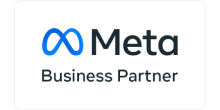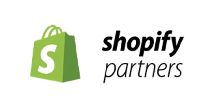When advertisers come to Yatter because their ads aren’t working, often it’s not actually the fault of the ads. It’s because the landing page sucks.
If you are running Facebook ads and want them to be profitable, you need a landing page that converts well. If it doesn’t, your advertising will never work. Successful advertising requires two things:
- Compelling adverts
- An effective landing page/funnel that converts
If you send traffic to a landing page that doesn’t convert, it’s a wasted opportunity. And when wasted opportunity means wasted money. You don’t want that, right…?
In this article and video, I answer common questions such as: What is a Landing page? How do you create a landing page that converts?
Let’s get started with…
What Are Landing Pages?
Simply, a landing page is the page someone “lands on” after clicking on your advert (or any link for that matter). It’s the entry point to your marketing funnel.
They’re typically designed to push the person landing on the page to take one specific action.
This could be downloading a free guide, purchasing a product or signing up to your newsletter, for example.
There are 7 main elements you need to include on your landing page for it to be as profitable as possible. Here they are…
The 7 Key Elements To Effective Landing Pages
There are 100’s of things that may impact how well a landing page converts, but I’ve come up with my top 7 below.
1. Compelling Title/Sub Title
The header and subheader is the first thing people will see when they land on your page. You only have a matter of seconds to make an impact and entice them to read further. That means you need to grab their attention fast & pique their curiosity. Make your titles benefit-driven. Tell them what’s in it for them.
2. Image/Video
I love including an image or video on my landing pages to introduce myself to the person landing on the page. Having a video there allows the person to get to know you, which builds trust. Make a quick 60s video introducing yourself and laying out the benefits of taking the action you want them to take.
3. Enticing Landing Page Sales Copy
If you’ve piqued their interest with your title, they’re going to read the rest of your page. This is a great opportunity to continue laying out the benefits of taking the action you want them to take. I like to use bullet points to make it easy and clear to see. What are the top 3 benefits of taking the action?
4. Compelling Call To Action
The most important part of the landing page is the call to action. What action do you want them to take? Is it to purchase? Download something? Enter their information? You need a clear, compelling call to action. When writing button text on your page, I like to make it benefit-driven, such as “Yes, I want more profit!”, instead of the usual “Download here”.
5. All Important Info Above The Fold
The “fold” on a web page is the point where users have to scroll down to see more. We want all the important part of the landing page above the fold. The headline, the video and the call to action button should all be visible when someone first lands on the page.
6. Include Social Proof on Your Landing Page
It’s vital to include social proof, in the form of testimonials, case studies or logos, on your page to build trust. Simply adding this to your landing page will drastically improve conversion rates.
7. No Exit Links
Quite often I’ll see advertisers send people to a landing page that has numerous links on it. Landing pages should be designed for only one action. Every other link you have on your page is an opportunity for the person landing on it to click somewhere else.
At Yatter, we build 100s of landing pages a year for our clients. If you’re looking for an agency that can create a landing page that converts better than any of your competitors, get in touch today.






